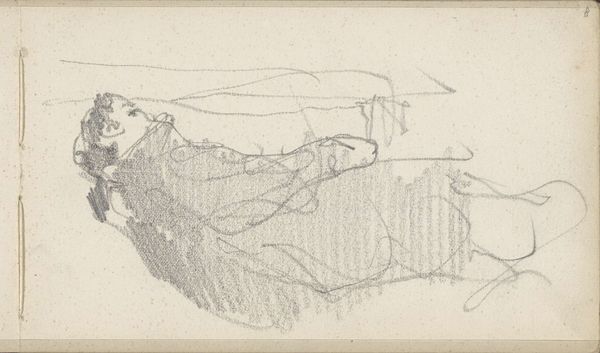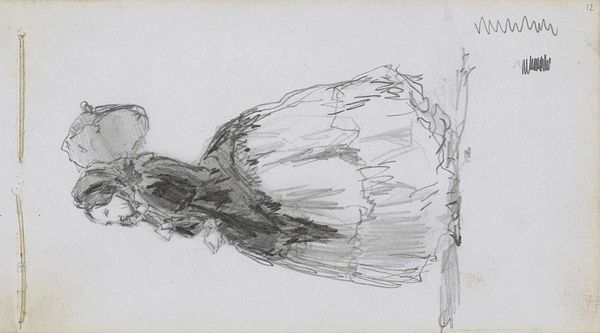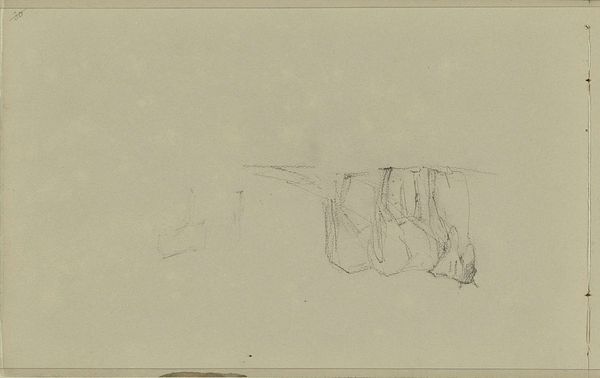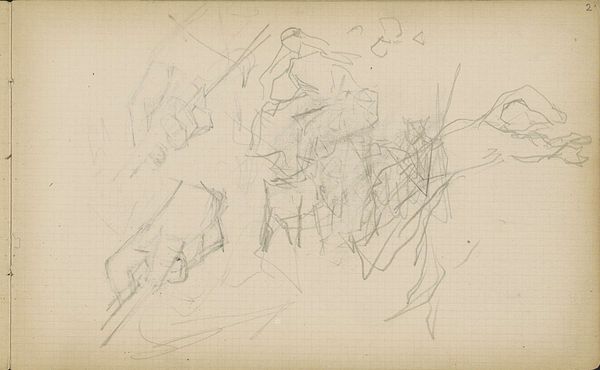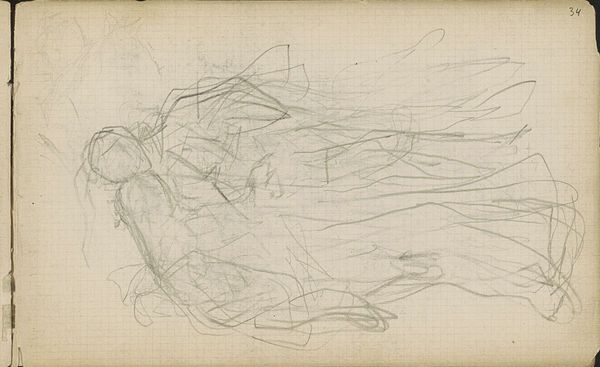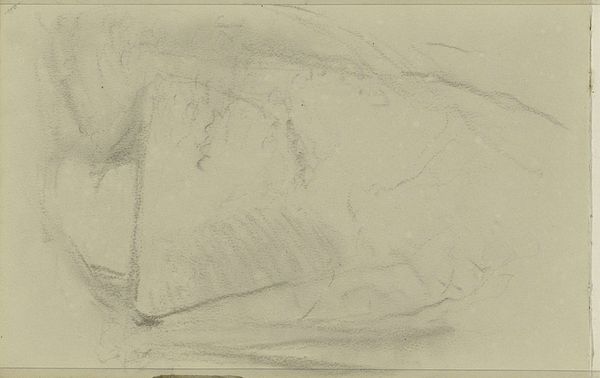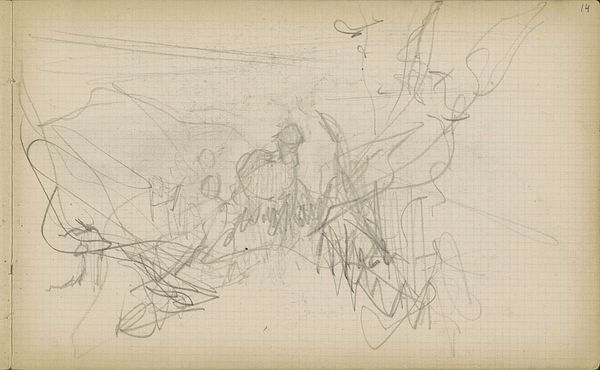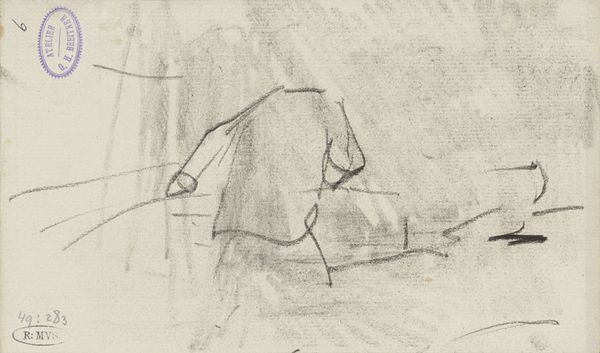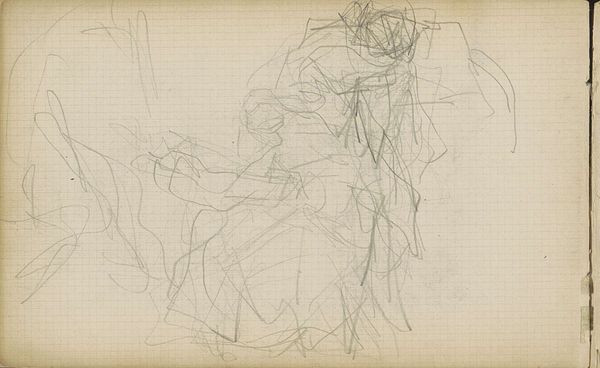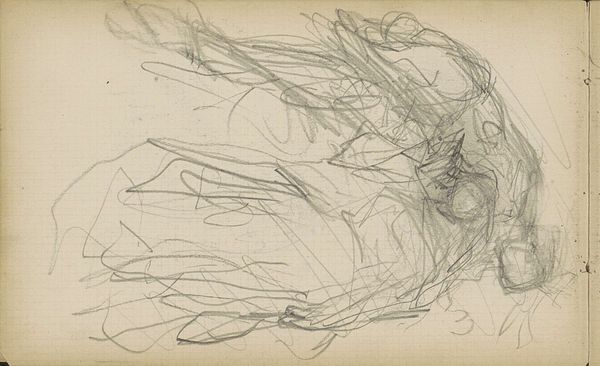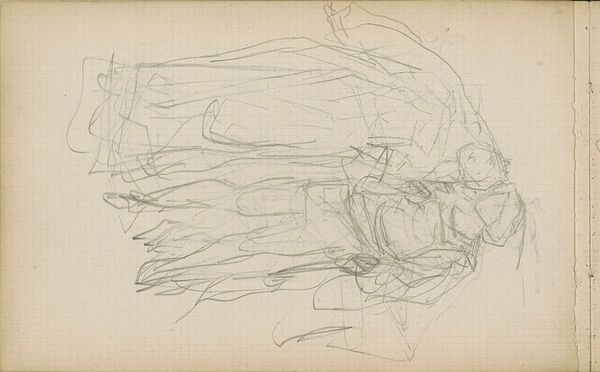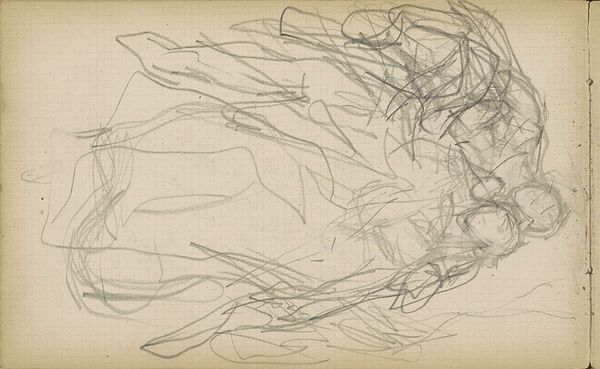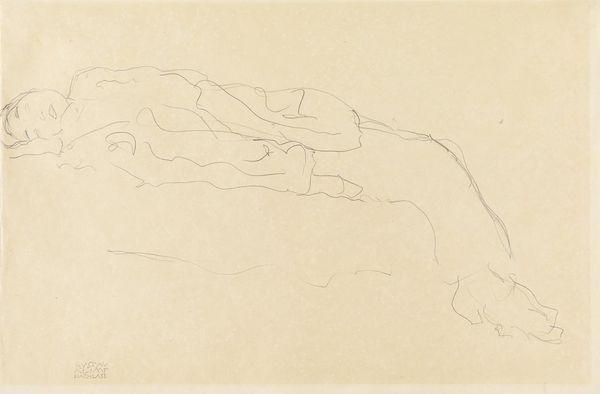
drawing, paper, pencil
#
drawing
#
impressionism
#
pencil sketch
#
landscape
#
figuration
#
paper
#
pencil
Copyright: Rijks Museum: Open Domain
Curator: My eyes keep getting drawn to what looks like frantic motion in this work, titled "Rennende figuur, op de rug gezien" by Matthijs Maris, sometime between 1849 and 1917. It's a pencil sketch on paper housed here at the Rijksmuseum. Editor: Yes, frantic is the word! There's a restless energy about this drawing; it's so light, almost ephemeral. You feel the artist capturing a fleeting moment, maybe even chasing after it. Curator: I see echoes of Impressionism here, not only in its form but in the cultural context. It’s less about realistic representation, and more about conveying a sense of movement, a transient emotional state reflected by society at that time. The figure seems caught in a moment of social change, always running to somewhere. Editor: An interesting idea! The anonymous, faceless figure gives me pause. Consider that Maris was working during a time of massive social upheaval. Are we seeing a reflection of the individual lost in the crowd, perhaps displaced by the industrial revolution or fleeing from conflict? The "running figure" motif taps into the fears and uncertainties of the period. Curator: That reading aligns perfectly. The figure could embody anxieties about societal instability, but perhaps a figure "running away" can be symbolic with hope in that day. Running could also speak to human aspirations towards innovation, the desire to always find something new; perhaps that’s a deeply held symbol we still value. Editor: Or even deeper into the personal; perhaps this drawing isn’t a study of a figure but rather the capturing of pure movement itself? You mentioned aspiration, and yes, I like how open the running symbolism can be in a moment of such intense artistic freedom. Curator: Agreed, it’s hard to definitively pinpoint its purpose without deeper historical investigation but, even on the surface, it resonates powerfully with anxieties and dreams alike. I’m left contemplating that very tension between aspiration and unease. Editor: Absolutely. And that open-ended interpretation is precisely what makes art from this period so enduring. There is always an element of us projecting onto these images that were once also new.
Comments
No comments
Be the first to comment and join the conversation on the ultimate creative platform.

